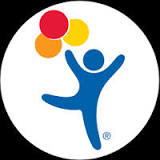Use of Esophageal String Test to Understand Symptoms, Inflammation, and Function in Eosinophilic Esophagitis
| Status: | Recruiting |
|---|---|
| Conditions: | Gastrointestinal |
| Therapuetic Areas: | Gastroenterology |
| Healthy: | No |
| Age Range: | 7 - 17 |
| Updated: | 6/22/2018 |
| Start Date: | May 1, 2018 |
| End Date: | January 2020 |
| Contact: | Faria Ahmed |
| Email: | faria.ahmed@childrenscolorado.org |
| Phone: | 720-777-2797 |
Presently, the only method available to monitor disease activity in Eosinophilic Esophagitis
(EoE) is endoscopy with pathological review of biopsies. The overall goal of this study is to
determine the ability of the Esophageal String Test (EST), a minimally invasive capsule based
technology, to measure disease activity in children with EoE. Additionally, to determine
esophageal distensibility in children presenting with EoE by using the EndoFLIP (functional
luminal imaging probe) device during endoscopic procedures.
(EoE) is endoscopy with pathological review of biopsies. The overall goal of this study is to
determine the ability of the Esophageal String Test (EST), a minimally invasive capsule based
technology, to measure disease activity in children with EoE. Additionally, to determine
esophageal distensibility in children presenting with EoE by using the EndoFLIP (functional
luminal imaging probe) device during endoscopic procedures.
When children are scheduled to undergo an endoscopy, research assistants will contact the
family to arrange for the Esophageal String Test (EST) to be performed within one week of the
endoscopy. The string test involves swallowing a small capsule with a thin piece of string
inside it. The string unravels as the capsule goes down into the stomach. The investigator
would tape the end of the string to the child's cheek, leaving it there for one hour. At the
end of the hour, the investigator would remove the string by gently pulling it out through
the mouth. Prior to swallowing the EST, the patient will complete the PEESS form (Pediatric
Eosinophilic Esophagitis Symptom Scores) to assess symptoms.
The endoscopy and Endoscopic Reference System (EREFs) and EndoFLIP will be performed. The
EndoFLIP is a slender probe covered by a smooth long balloon that is passed into the
esophagus and slowly expanded with a salt solution. After standard of care endoscopic
visualization, the FLIP, a 16 cm probe (Crospon) will be placed transorally and positioned 3
cm distal to the lower esophageal sphincter. Esophageal cross sectional areas and intrabag
pressure will be measured during stepwise distensions beginning with 5 mL and increasing to a
maximum of 70mL or intrabag pressure of 50 mmHg is achieved, whichever comes first. FLIP is
FDA-approved without age restriction and its use has been approved by our IRBs previously.
Primary results will be reported as distensibility plateau (mm).
Endoscopic severity: Endoscopic esophageal appearances will be scored using a validated EoE
scoring system (EREFS). Five features of EoE will be scored: Edema (0-1), Rings (0-3)
Exudates (0-2), Furrows (0-1), Stricture (0-1). Results will be reported as an inflammatory
score (edema, exudates, furrows) and fibrostenotic score (rings, stricture). Functional
Luminal Imaging Probe (FLIP):
family to arrange for the Esophageal String Test (EST) to be performed within one week of the
endoscopy. The string test involves swallowing a small capsule with a thin piece of string
inside it. The string unravels as the capsule goes down into the stomach. The investigator
would tape the end of the string to the child's cheek, leaving it there for one hour. At the
end of the hour, the investigator would remove the string by gently pulling it out through
the mouth. Prior to swallowing the EST, the patient will complete the PEESS form (Pediatric
Eosinophilic Esophagitis Symptom Scores) to assess symptoms.
The endoscopy and Endoscopic Reference System (EREFs) and EndoFLIP will be performed. The
EndoFLIP is a slender probe covered by a smooth long balloon that is passed into the
esophagus and slowly expanded with a salt solution. After standard of care endoscopic
visualization, the FLIP, a 16 cm probe (Crospon) will be placed transorally and positioned 3
cm distal to the lower esophageal sphincter. Esophageal cross sectional areas and intrabag
pressure will be measured during stepwise distensions beginning with 5 mL and increasing to a
maximum of 70mL or intrabag pressure of 50 mmHg is achieved, whichever comes first. FLIP is
FDA-approved without age restriction and its use has been approved by our IRBs previously.
Primary results will be reported as distensibility plateau (mm).
Endoscopic severity: Endoscopic esophageal appearances will be scored using a validated EoE
scoring system (EREFS). Five features of EoE will be scored: Edema (0-1), Rings (0-3)
Exudates (0-2), Furrows (0-1), Stricture (0-1). Results will be reported as an inflammatory
score (edema, exudates, furrows) and fibrostenotic score (rings, stricture). Functional
Luminal Imaging Probe (FLIP):
Inclusion Criteria:
- Provide signed and dated informed consent form.
- Willing to comply with all study procedures and be available for the duration of the
study.
- Male or female, aged 7 to 18 years old, inclusive
- Undergoing upper Endoscopy with biopsy for clinical care at CHCO or CHOP
- Current or historical diagnosis of EoE, or suspected of having EoE
Exclusion Criteria:
- Known connective tissue disease, other eosinophilic disorders
- Past history of caustic injestion, esophageal surgery or other esophageal injury
- Known inflammatory bowel disease or esophageal motility disease (achalasia)
- Unwilling or unable to swallow the EST
- Oral or intravenous steroids in the preceding 60 days (not including swallowed topical
fluticasone, budesonide, etc)
- Pregnancy
- Participation in a clinical study that may interfere with participation in this study
We found this trial at
1
site
13123 E 16th Ave
Aurora, Colorado 80045
Aurora, Colorado 80045
(720) 777-1234

Principal Investigator: Calies Menard-Katcher, MD
Phone: 720-777-2797
Children's Hospital Colorado At Children's Hospital Colorado, we see more, treat more and heal more...
Click here to add this to my saved trials